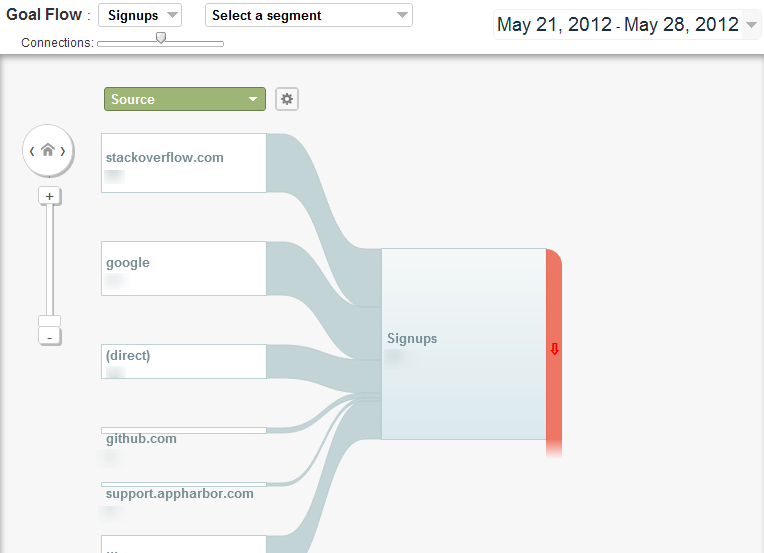The 10-Minute Rule for Google Analytics Event Tracking
Table of Contents6 Simple Techniques For Google Analytics Event TrackingEverything about Google Analytics Event TrackingThe Facts About Google Analytics Event Tracking UncoveredThe Ultimate Guide To Google Analytics Event TrackingFascination About Google Analytics Event TrackingGoogle Analytics Event Tracking Fundamentals Explained

If you're going to establish event tracking by hand, then you're going to need to include some extra code to the aspects you wish to collect data from. The code you're mosting likely to collaborate with will look something similar to this: There are 4 components within that code bit that you're mosting likely to require to define yourself: occasion, Group, occasion, Action, event, Tag and occasion, Worth.
As you can see, 2 of these are required (classification and activity) while tag and worth are optional. It all depends on the type of details you desire relayed back to Google Analytics when an individual clicks the specified element (Google Analytics Event Tracking). It will be a lot easier to define these elements if you analyse your web site and determine which elements/actions you want to track
Google Analytics Event Tracking Things To Know Before You Buy
Currently, you'll be asked to specify the and and you'll want to choose from the drop-down food selection that shows up when you click on. This will certainly raise the very same occasion tracking components we looked at earlier, which you'll need to complete. As soon as you've defined these, you can relocate to the 2nd box and select the trigger that will fire your tag.
On the following screen, you'll also have an area for calling your trigger and, if you click on package, you'll see a listing of the different triggers you can pick. In this instance, we wish to select and after that choose the option listed below. Then you'll establish the trigger to just fire when an element is clicked with a link which contains the.
Straightforward - Occasion tracking! Occasion tracking provides you an image of how individuals engage with your internet site and business. Check out on as we check out every little thing you require to know, including what it is, why you ought to track occasions, just how to take care of occasions data, and other relevant FAQs you may have.
Some Ideas on Google Analytics Event Tracking You Need To Know
You can switch in between your occasion classifications, actions, and labels in the Leading Occasions report. This report is vital for digging even more into study on a details occasion classification. The Event Pages record shows the pages where events are caused. In this area, we can take a look at the top pages that drive occasions.
Occasions in Google Analytics have four major elements. Google Analytics makes use of these codes to track individual interactions and team them official statement right into event records (Google Analytics Event Tracking).
Choose "Variables" > "Configure". A checklist of the specifications you can track on your website is on the right. Under Clicks, Forms, and Videos, double-check each criterion. After checking all required areas, you can click "X" to close the window and return to the Review menu on the.
4 Simple Techniques For Google Analytics Event Tracking

Picking "False" will certainly protect against that session from being a bounce. If you have not done so, you might require to establish up a variable in the Google Analytics Settings box. Click "New Variable ..." if you can't discover one to select. After this, enter your GA tracking ID in the Tracking ID field.
Your ID will be on top of the screen. To do this, follow the following collection of activities: After configuring the fields, select the "Triggering" best site section. When configuring your brand-new trigger, click the "+" switch, after that the "pencil" button, then choose your trigger kind. Tag your trigger and specify the conditions that lead to trigger shooting.
The Main Principles Of Google Analytics Event Tracking
When it comes to understanding which sections and aspects are guiding clients through your conversion funnel, you still will not recognize. So, without event monitoring, GA records will only count brows through as single-page sessions, even if individuals invest a lot of time on one page and involve with it significantly (and a bounce).
Exactly how does occasion monitoring accomplish this?Single-page sessions recognized as bounces start and end on the same page. Without event tracking, GA will categorize an individual's see as a bounce if they do not browse to an additional web page, despite exactly how they engage with it. For instance, a video-rich page can have a higher bounce rate if events are not tracked.
Getting The Google Analytics Event Tracking To Work
For GA to take event hits right into account when determining bounce rates, you need to choose "Non-interaction occasion" as "False" during the GTM arrangement. Setting "occasion goals" with occasion action is a superb method to monitor individual activities you worth highly, such browse around these guys as new lead entries or clicks on a phone call to action.